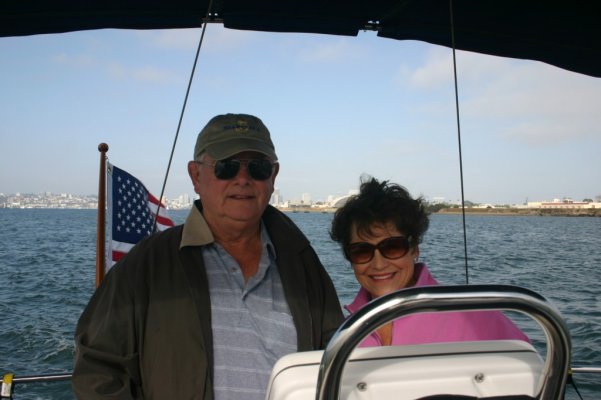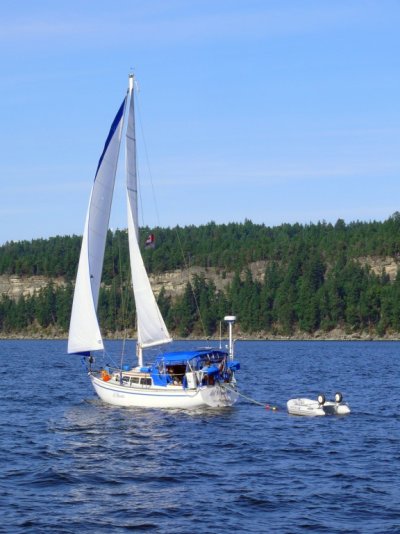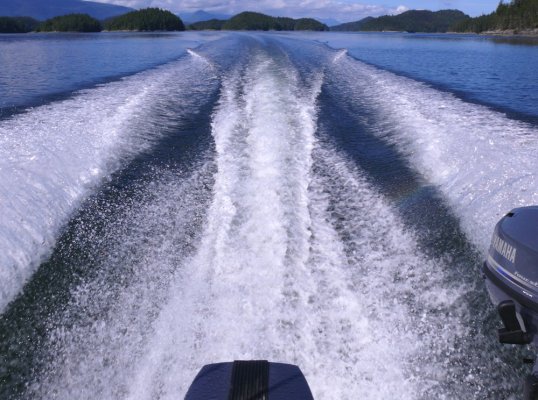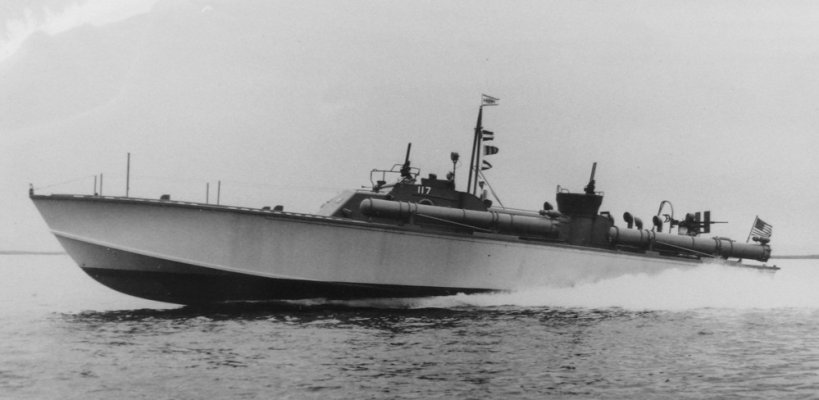Baker wrote:
Marin, there are disadvantages to speed other than expense. *Going faster requires you to pay closer attention which causes fatigue. *Also going faster usually causes more noise which increases fatigue. *A lapse in that attention could cause you to hit something which has a much greater potential for serious damage and injury versus going slowly. *Going faster you don't always see the scenery.
Fine for you.* But none of that is true for me.* I love going fast, I have no more problem seeing and avoiding stuff in the water--- and up here there's a ton of it--- in the Arima at 30 mph as I do in the GB at 8 knots.* I don't get fatigued at all because the trip takes so much less time.* What might take eight hours in the GB would take less than three in a fast boat.* What I find tiring to the polnt of losing concentration is plodding along, hour after boring hour, in the tub of a GB at 8 knots.*
At the end of a day's running around in the Arima I feel pretty much the same as when I started and am ready to set out again.* At the end of a day's continuous run in the GB, I'm whacked, not because it's hard work but because it's so excruciatinly boring other than watching the passing scenery.* There's no challenge to keep me occupied.* Our dog could run the boat and have time to play fetch on deck while he was at it.* I have to use a timer alarm to remind me to check the engine instruments every five minutes.
As to seeing the scenery, I thought at first what you say would be true but both my wife and I find it's not.* We see all the whales and eagles and seabirds and everything else just as readily at 30 mph as we do at 8 knots.* The only difference is that at 8 knots, you see something for freaking ever as you creep past it at the speed of molasses.* At 30 mph, you see it, if you want to take a photo or look at it more carefully, you slow down or stop, and then off you go to the next thing.
In one run up north the other week we caught a halibut, saw minke and humpback whales, watched eagles feeding on fish on a beach, visited and explored a derelict but historic community site miles up 77-mile long Knight Inlet, stopped to watch a family of otters mucking about in the water next to a tiny island, watched a couple of bears feeding in the grass at a creek mouth, and came back to where we were staying, all in about five hours.* Al these individual things happened miles apart.* Had we spent the same amount of time in the same place in the GB, we would have seen hardly any of this.
Different strokes for different folks, but for us, slow truly sucks.* The only reason we have a slow tub of a trawler is we can't afford to run a big fast boat.* If we could, the GB would be history.
-- Edited by Marin on Tuesday 15th of June 2010 01:22:51 PM




